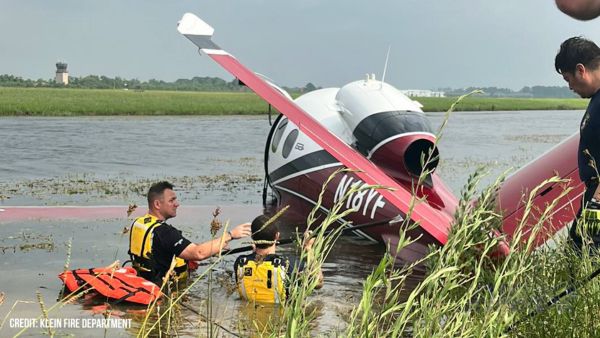Tue, Jan 04, 2022
The Airplane Descent Increased Before It Went Off Radar
Location: Houston, TX Accident Number: CEN22FA067
Date & Time: December 8, 2021, 19:57 Local Registration: N3865K
Aircraft: Piper Aircraft PA 28-140 Injuries: 2 Fatal
Flight Conducted Under: Part 91: General aviation - Personal

On December 8, 2021, about 1957 central standard time, a Piper PA 28-140 airplane, N3865K, was destroyed when it was involved in an accident near Houston, Texas. The student pilot and passenger were fatally injured. The airplane was operated as a Title 14 Code of Federal Regulations Part 91 personal flight.
There were no witnesses to the accident. Radar indicated the airplane departed the West Houston Airport (IWS) about 1955 and proceeded generally south-southwest. About 1.5 miles later the track showed a slight descending left turn and the groundspeed of the airplane increased. The airplane then made a slight right turn; during which, the airplane climbed and the groundspeed decreased. The airplane then made a tight left descending turn followed immediately by a hard right descending turn. The airplane descent increased before it went off radar.
The airplane was found the next day about 2.5 miles south of the airport in a heavily wooded area. The debris path was about 50 ft long on a heading of 320°. The first identified points of impact were a few topped trees, followed by a portion of the outboard right wing. Several more trees were topped descending toward a large impact crater in the soft dirt. The airplane came to rest nose down just beyond the crater; it was the last major piece of debris.
On the day of the accident, the sunset at 1723, and civil twilight ended at 1749. About the time of the accident, the sun was greater than 32° below the horizon, and the moon was about 24° above the horizon. The phase of the moon was a waxing crescent with 29% of the moon’s disk illuminated. Satellite imagery indicated an area of low stratus and/or fog in the vicinity of the accident site. The national weather service had also issued an AIRMET for instrument flight rules conditions over the Houston area, due to visibility below 3 miles, mist, and fog.
More News
“Warbirds in Review features veterans, aviation legends, and aircraft that simply cannot be seen together in one place anywhere else in the world. Many of these veterans main>[...]
Also: VAI v Anti-Heli Actions, Electric Aircraft Symposium, 2024 FAA Drone/AAM Symposium, Gravitymaster Blue Origin's seventh passenger flight ended with a smidgeon of drama when o>[...]
“The importance of this YF-16 paint scheme is celebrating 50 years of the F-16 Viper. Everyone at Edwards has a big sense of pride for not only supporting the Viper Demo Team>[...]
Aero Linx: National Aeronca Association We are dedicated to supporting the design and preserving the history of Aeronca aircraft. Founded by Jim Thompson and fostered by his leader>[...]
Klyde Sounds Like He's Defining An 'Influencer' FMI: www.klydemorris.com>[...]
 Aero-News: Quote of the Day (05.25.24)
Aero-News: Quote of the Day (05.25.24) Airborne 05.22.24: NS-25 Chute Failure, #HonorTheWASP, SkyCourier 'Combi'
Airborne 05.22.24: NS-25 Chute Failure, #HonorTheWASP, SkyCourier 'Combi' Aero-News: Quote of the Day (05.26.24)
Aero-News: Quote of the Day (05.26.24) ANN's Daily Aero-Linx (05.26.24)
ANN's Daily Aero-Linx (05.26.24) Klyde Morris (05.24.24)
Klyde Morris (05.24.24)



